Anatomy of an Axe Axe, Ancient, Axe head

What Axes Are Used For Top 25 Types of Axes & Axe Heads 1. Felling Axe / Hatchet 2. Shepherd's Axe 3. Ice Axe 4. Mattock 5. Hudson Bay Axe 6. Bardiche 7. Halberd 8. Dagger Axe 9. Dayton Axe 10. Axe Pistol 11. Miner's Axe 12. Forest Axe 13. Carpenters Axe 14.
Axe head identification

4. Broad axe A broad axe, or hewing axe, is a purpose-built tool to help carpenters transform round logs into timber with a flat edge. The axe head has one flat side and one side with a beveled edge, great for chopping. Timber mills and modern tools mean that the broad axe isn't as popular as in previous centuries. Want to learn more?
Hand Axe Head Auslet Australian Craft and Makers Store
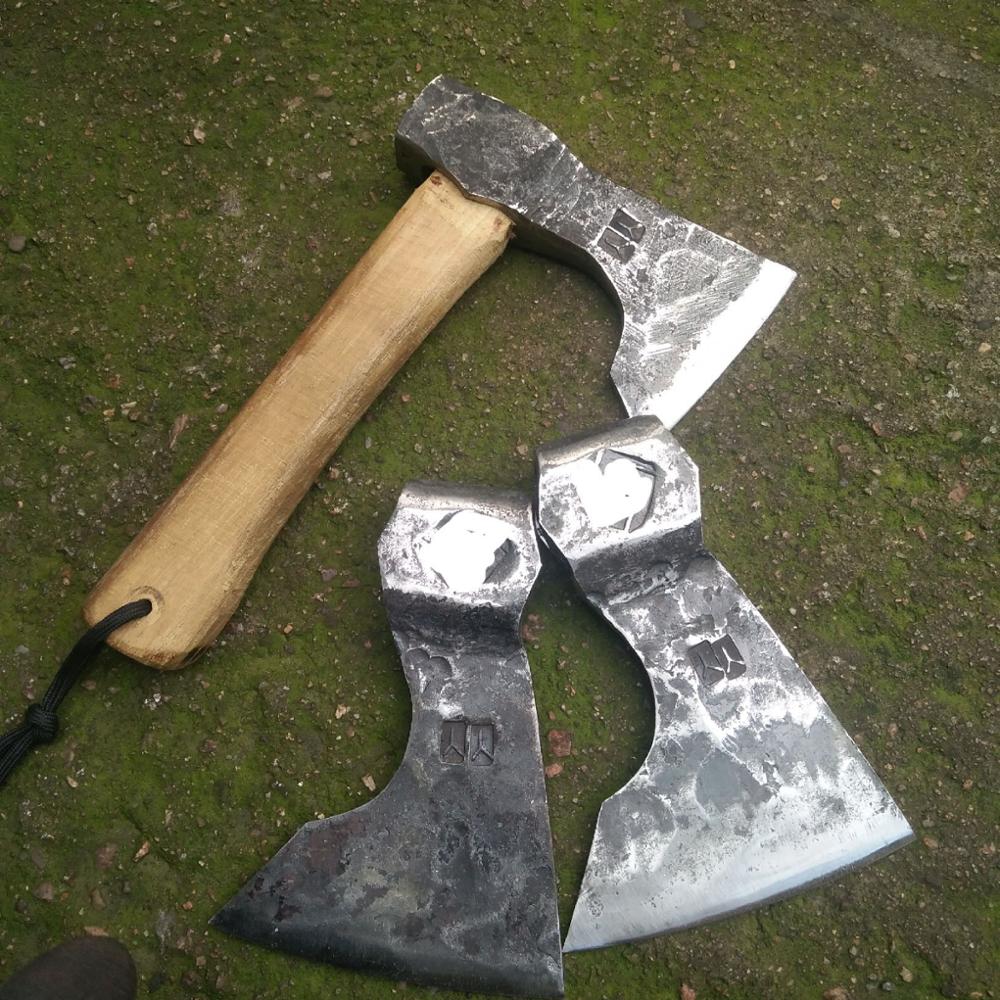
The first clue is if the axe has a brand marking on the head. It is also vital that you know the basic features of different axes to help you identify the tool you found. Antique Axe Identification Antique Axe Edge tools, such as an axe, are one of the earliest forms of tools ever to exist.
Identifying various types of axe heads. Antique, Treasure hunting, metal detecting. Axe head

1. Felling Axe Head The felling axe head is the most common tool in this category. It's mostly used for chopping and cutting trees, and the wide head can split wood effortlessly. The design features a single blade head. 2. Hatched Axe Head A hatchet head is most used for felling and features a wide head.
Types of Axes How to Choose The Perfect Axe
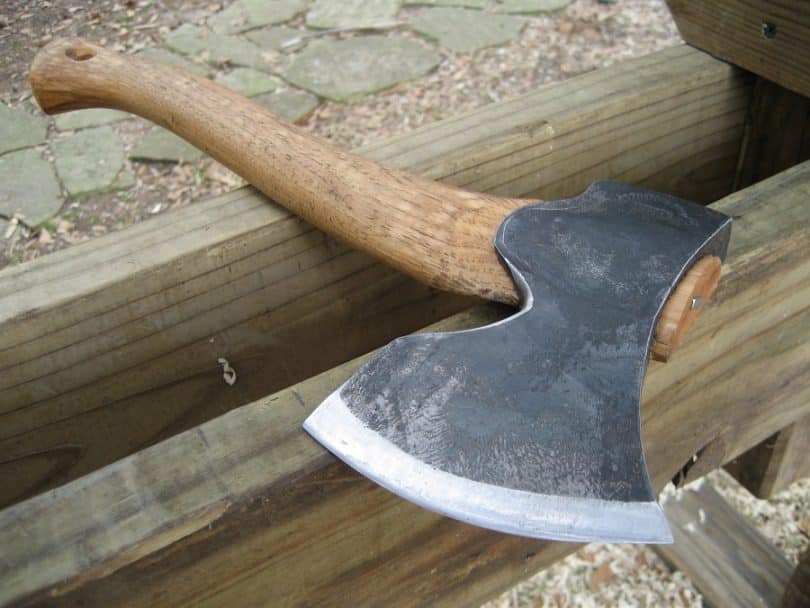
Common Plumb Axe Head Markings can be used to identify the age and the origin of a plumb axe head. These markings are often found on the side of the axe head, near the eye or on the bottom of the head. Common markings found on plumb axe heads include a patent number, the name of the manufacturer, the country of origin, and the manufacturing date.
23 Types of Axes Types of Axe Heads and Their Uses [Explained with Pictures] Engineering Learn
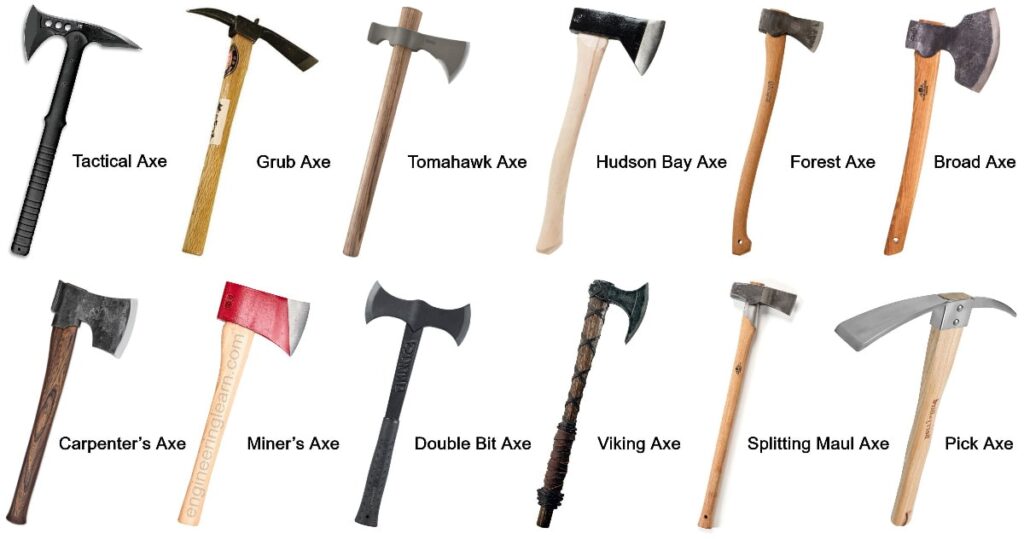
1. Tactical Axe: ( Types of Axes ) Tactical Axe The tactical axe is referred to as an advanced development, which is something of a multi-device. Likewise normally known as a strategic hatchet, this hatchet has acquired notoriety among policemen, warriors, and safety crew, just as survivalists.
Axe head identification

Old axe heads come in all shapes and sizes, materials, and markings, making their identification like a scene from a National Treasure movie. Sometimes you don't have the energy or desire for all that. I get it. So I've put together a guide on recognizing the types of antique axe heads to make your life a little easier.
The Pixel Smith — Axe Shapes These will be my available rail road...
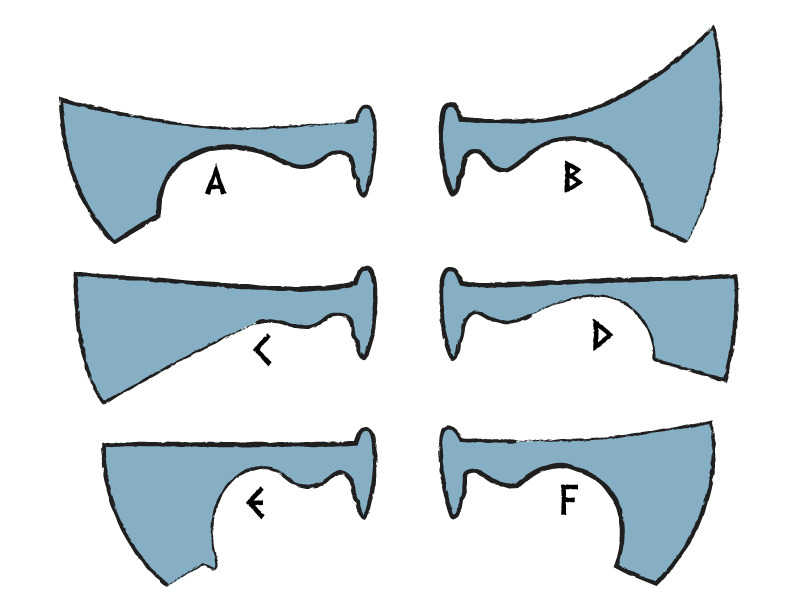
2. Broad Axe. This type of axe has two types: single bevel and double bevel. The single bevel broad axe is basically used for hewing flat planes on wood while the double bevel broad axe is used for notching and general chopping. It is more identifiable because it is categorized as a large headed axe.
axetypes.jpg (1600×1377) Axes & hatchets Pinterest Shape names, Eye shapes and Shape

However, the shape of the head is one of the most useful characteristics to determine the type of axe. So, if you are clear in your head about what you want your axe to do, go ahead, and choose from the following. Cutting Ax: Also known as the felling ax and the single bit, these are all-rounders when it comes to the wood-cutting job. They.
INCH Technical English axe types
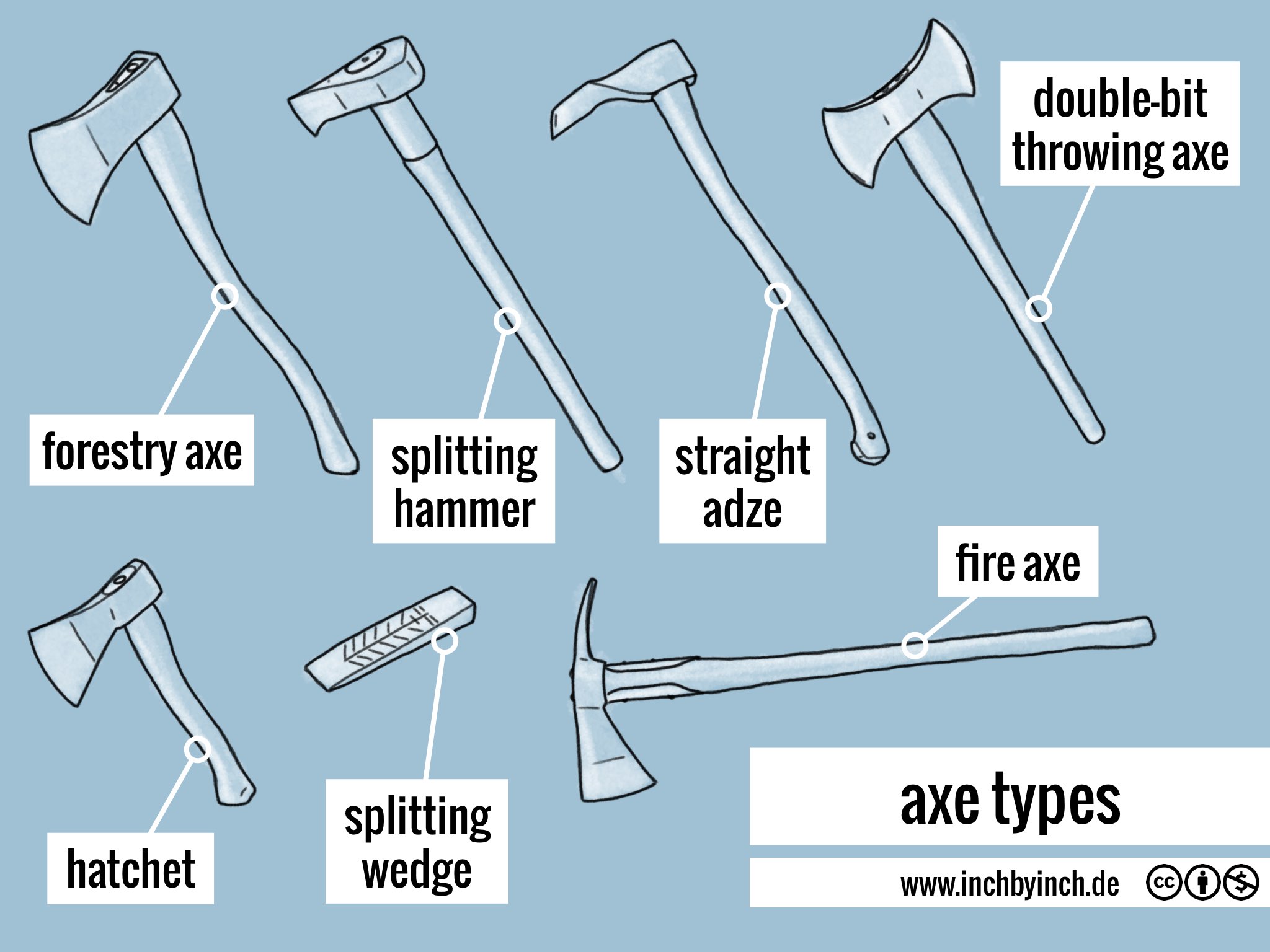
Here's a table with the top features of different axe head shapes and their costs: Vintage Stone Axe Head Shapes: Estimated Value: Tear-drop (Round & Pointed) $200 - 4000: Triangular: $500 - 2000: Curved & Crescent: $100 - 900: D or Unifacial shaped: $50 - 600: 6. Vintage Stone Axe Head Finishes.
Different axes heads from the Scandinavian and AngloSaxons cultures, some for work and others

3 Head Shapes for Different Uses OCHSENKOPF Axes and Splitting Hammers Correct Regrinding Further Topics Axes for felling, limbing and maintenance The classic axe shape, characterised by its long, rounded cutting edge with a flat head, is best suited for felling, limbing and cultivation.
28+ Different Types Of Axes, Axe Heads and Their Uses (With Photos)

A good trick to judge the right length of the handle is to place the axe head on the ground with the handle facing up. Hold your arms relaxed beside your body. The base of the handle should reach up to the second joint of your middle finger. This is just a simple idea I have heard to give yourself a quick start check.
Axe Chart La Bushcraft Axe, Bushcraft Camping, Beil, Axe Handle, Knife Patterns, Homemade

Michigan axe heads come in two standard shapes: convex and concave. The convex shape is designed to provide more force when striking a log, while the concave shape is better suited for making deeper, even cuts. Both of these axe shapes are available in different sizes and weights depending on the type of work you're doing.
How Axe Heads Stay On (Illustrated) Axe & Tool

There are two different methods for forming an axe head from one piece of steel - it can either be forged or cast. Forged axes are made with steel that is hammered or pressed into shape. Cast axes are made by melting the steel and pouring them into a mold. How Forged Steel Axe Head s are Made:
1932 PAPER AD Blue Grass Axe Head Shapes Designs 20 Patterns Single Double Bit Old technology

Hudson Bay axehead pattern axes were popular with fur traders, woodsmen, and canoe people. They were not meant to be used as felling axes, instead they were all-purpose camp axes good for limbing tree branches and cutting down small trees to use for building shelters, processing firewood, hunted-down big game and so on.
Restored Axes and Tools Yellowood Design Studio Axe Education

This is a popular axe head pattern that takes the shape of a slightly flared wedge. It is great for general copping duties. Of course, there are many other types of axes besides the well-known felling axe. Some things you will want to consider in your search for the perfect axe are: Things You Should Consider When Searching a Perfect Axe A. Handle